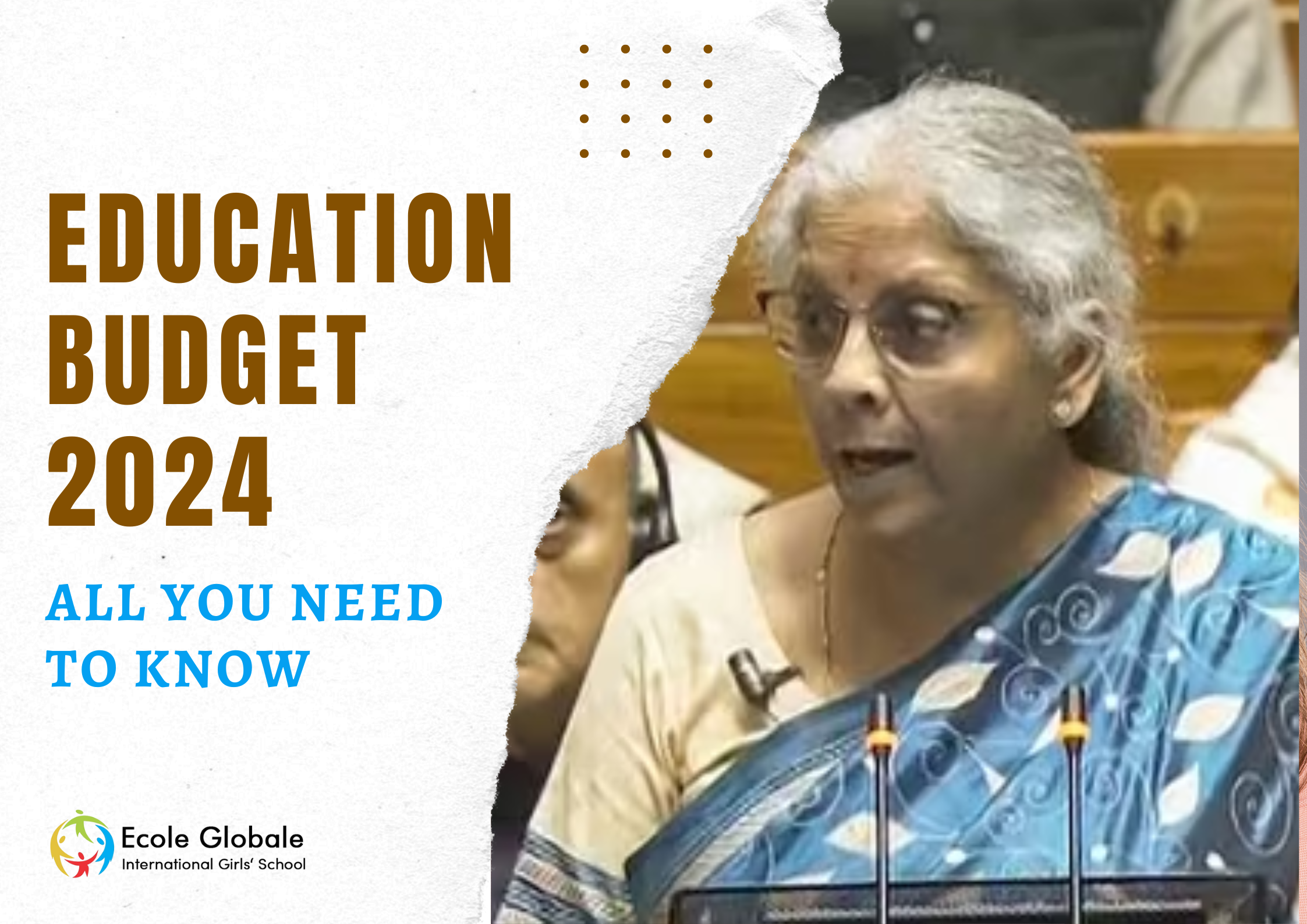The education budget in India is a pivotal factor in shaping the nation’s future, directly impacting the quality and accessibility of education. The comparison between the Education budget 2023 vs 2024 education budgets offers insights into the government’s evolving priorities and commitment to educational reforms.
2023 Education Budget Overview
The key highlights of the Education Budget 2023, as presented by the Union Finance Minister Nirmala Sitharaman, include:
- Increased Budget for School Education: The budget for school education saw an increase of over Rs 500 crore.
- Reduction in Higher Education Funding: The grant for higher education was reduced by over Rs 9600 crore from the previous fiscal year’s Revised Estimate (RE).
- National Digital Library for Children and Adolescents: Announcement of a national digital library initiative, continuing from a similar announcement in 2018.
- Funding for UGC Reduced: The funding for the University Grants Commission (UGC) has been significantly reduced to Rs 2500 crore from the previous year’s RE of Rs 6409 crore, marking a 60.99 percent drop.
- Overall Budget Allocation: Last year, the Education Ministry’s budget allocation increased by a marginal 8 percent from Rs 1.12 lakh crore as opposed to Rs 1.04 lakh crore in 2022-23.
- Allocations for Departments: The Department of School Education was allocated Rs 68,804 crore, and the Department of Higher Education received Rs 44,094 crore.
These changes reflect the government’s shifting priorities within the education sector, with a notable increase in school education funding but a significant cut in higher education and UGC funding.
2024 Education Budget Overview
The key highlights of the Education Budget 2024 include:
- Increase in Female Enrollment: Female enrollment in higher education has increased by 28%, with enrollment in STEM courses at 43%, one of the highest in the world.
- Expansion of Medical Colleges: Plans to set up more medical colleges utilizing existing hospital infrastructure, with a committee to be set up for examining issues and making recommendations.
- Quality Teaching and Skill Development: PM SHRI schools deliver quality teaching and nurture holistic individuals. Skill India has trained 1.8 crore youths, upskilled and re-skilled 54 lakh youths, and established 3,000 new ITIs.
- Establishment of Higher Education Institutions: A significant number of higher education institutions have been set up, including 7 IITs, 16 IIITs, 7 IIMs, 16 AIIMS, and 390 universities.
These initiatives aim to enhance the skills of today’s youth, increase educational opportunities, especially for students in Tier 2 and 3 cities, and promote gender equality in STEM fields.
Comparative Analysis for Education Budget 2023 vs 2024
- Budget Allocation for School and Higher Education:
- 2023: Increased funding for school education by over Rs 500 crore but reduced higher education funding by over Rs 9600 crore.
- 2024: Focus on expanding higher education institutions, including 7 IITs, 16 IIITs, 7 IIMs, 16 AIIMS, and 390 universities, indicating a shift towards enhancing higher education infrastructure.
- Digital and Skill Development Initiatives:
- 2023: Introduction of a National Digital Library for children and adolescents.
- 2024: Emphasis on quality teaching and skill development through PM SHRI schools, Skill India training 1.8 crore youths, and establishment of 3,000 new ITIs.
- Funding for UGC:
- 2023: Significant reduction in funding for the University Grants Commission (UGC) to Rs 2500 crore.
- 2024: No specific mention of UGC funding, but a broad increase in the establishment of higher education institutions suggests a reallocation of resources.
- Focus on Gender Equality and Medical Education:
- 2024: Specific mention of increasing female enrollment in higher education by 28% and plans to set up more medical colleges, which were not highlighted in the 2023 budget.
Benefits of Education Budget 2023 and 2024
- 2023: The increase in school education funding could improve basic education infrastructure and accessibility. The National Digital Library initiative could enhance learning resources for children and adolescents.
- 2024: The expansion of higher education institutions and medical colleges is likely to create more educational opportunities and address the shortage of healthcare professionals. The focus on skill development and quality teaching aims to prepare a skilled workforce, contributing to economic growth.
Flaws of Education Budget 2023 and 2024
- 2023: Reducing higher education funding and significant cuts to UGC could negatively impact research and development, quality of higher education, and financial support for students and institutions.
- 2024: While the budget focuses on higher education and skill development, it does not explicitly address the funding cuts from the previous year, potentially leaving unresolved challenges in funding and support for existing institutions.
Overall, the shift from Education Budget 2023 Vs 2024 shows a realignment of priorities toward higher education, skill development, and gender equality in STEM fields. However, the reduction in higher education funding in 2023 and the lack of clarity on UGC funding in 2024 could pose challenges to achieving these goals.
Conclusion
The comparison between India’s Education Budget 2023 Vs 2024 reveals a strategic shift in educational priorities. While both budgets contribute to democratizing education, they address different aspects of the educational ecosystem. As India continues to navigate its path toward educational excellence, these budgets play a crucial role in shaping the future of its educational landscape.









